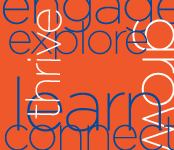—Jada Pinkett Smith
—Dr. Grace Lee Boggs, philosopher and Detroit community organizer
—ECO Girl Parent
Conceptual Notes for an ECO Girls Curriculum
The initial development of the ECO Girls curriculum in 2011 was motivated by a set of serious questions about our changing world and the place of girls and women in it. In the short term, we wondered: How can we inspire girls to experience and value their connection to nature and to respect and care for the earth? How can we encourage girls to treat themselves with that same quality of respect and to recognize their own strengths and talents? How can we foster an ethic of community service linked to the care of earth and self? For the long term, we wondered: How can we prepare girls and young women for a future that will likely be characterized by greater risk and social instability due to extreme weather events, climate change, and natural resource depletion (especially oil and water)? How do we encourage and teach creative thinking, flexible thinking, and practical skills that can contribute to resilience amidst challenges, shocks, and shifts in lifestyle? How can we prepare the girls in our program to be future leaders in their families, Michigan communities, and broader global context by sharing their skills, ideas, and talents? In response to these questions, we have imagined our curriculum as rich soil with various layers--soil that deepens as a student develops and spends more time in the ECO Girls program.
Curricular Layer 1: Connection (with the natural world), Confidence (mental, emotional, physical—in self and her abilities), Creativity (generating new ideas, making links, self-expression, creating and appreciating beauty across cultures), Community (making friends from various backgrounds, appreciating our circles of relatedness, recognizing the necessity and satisfaction of working with others).
Curricular Layer 2: Exposure (to green and wild places in our region, to neighboring communities and cities, to a range of cultural histories and values), Awareness (of the natural world, of challenges to our environment), Understanding (natural systems, eco-surroundings, the human place in natural world).
Curricular Layer 3: Skill Building (learning how to do useful things, such as: recognizing plants and their uses, growing and harvesting food, using the strength of our bodies as energy sources), Problem Solving (imagining approaches and solutions to challenging tasks, situations, problems).
Curricular Layer 4: Critical Consciousness (perceiving a range of challenges to our environment as well as to natural and human communities, asking critical questions about our cultural status quo especially regarding consumption, waste production), Creative Alternatives (imagining new cultural narratives and values, identifying and building on previous concepts and traditions from a range of cultural experiences, creating alternatives that foster stewardship, sustainable and resilient life habits), Community Citizenship (actively contributing to communities through participation, service).




